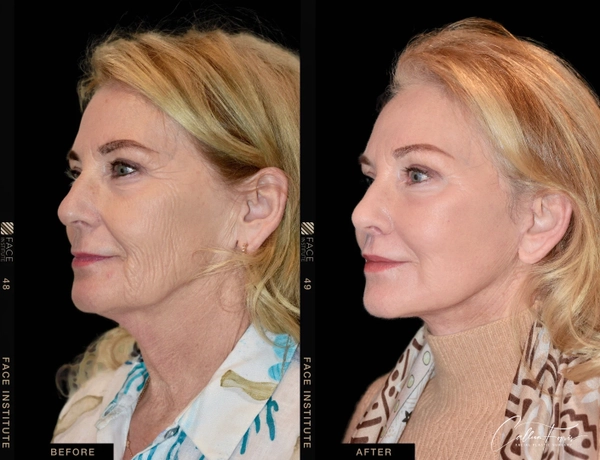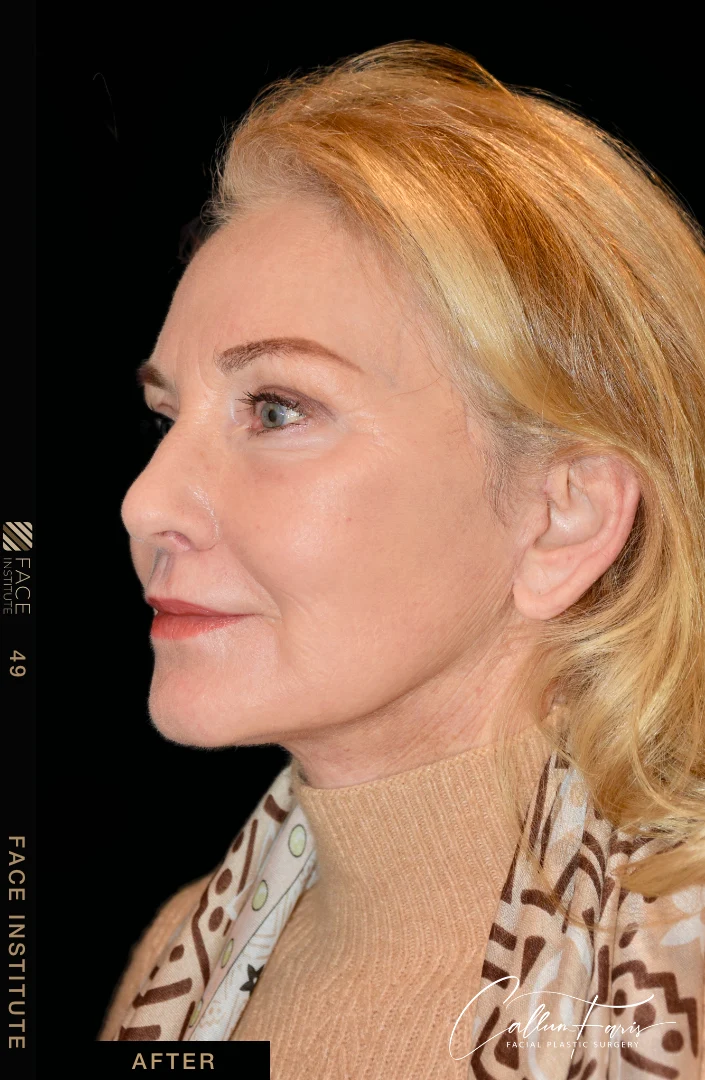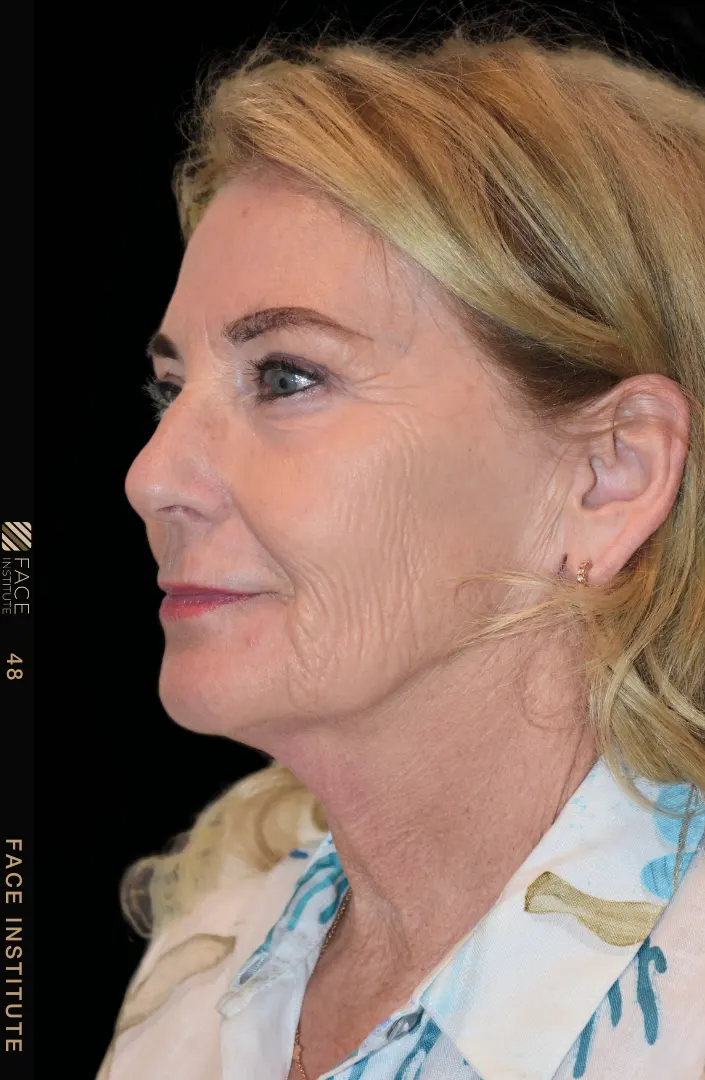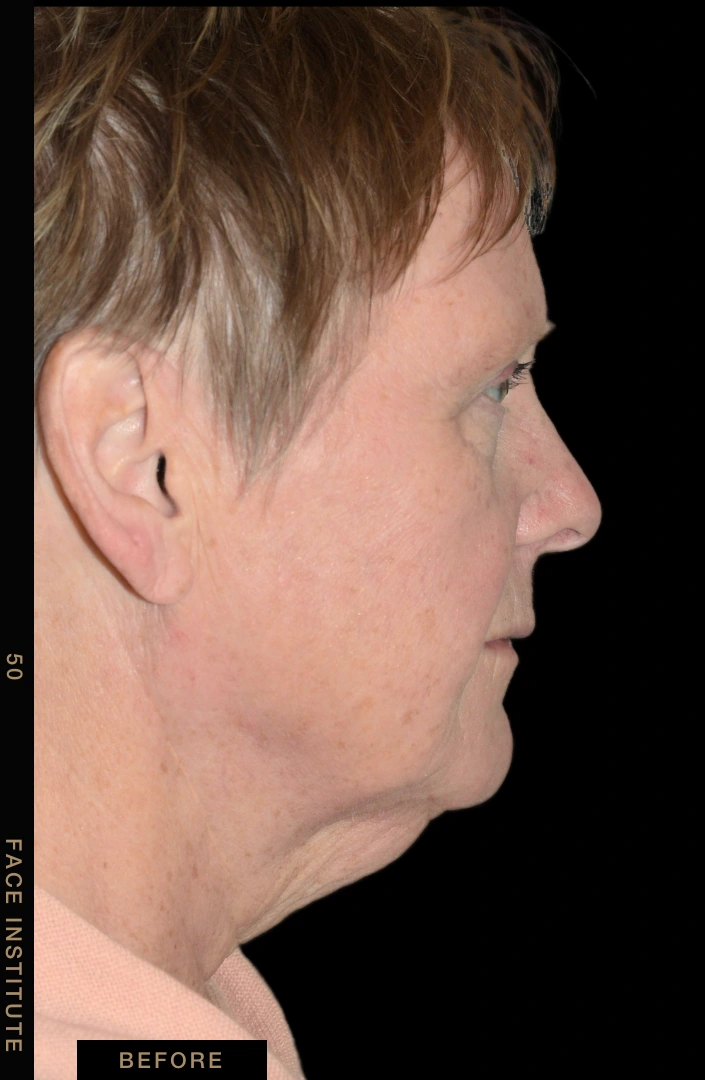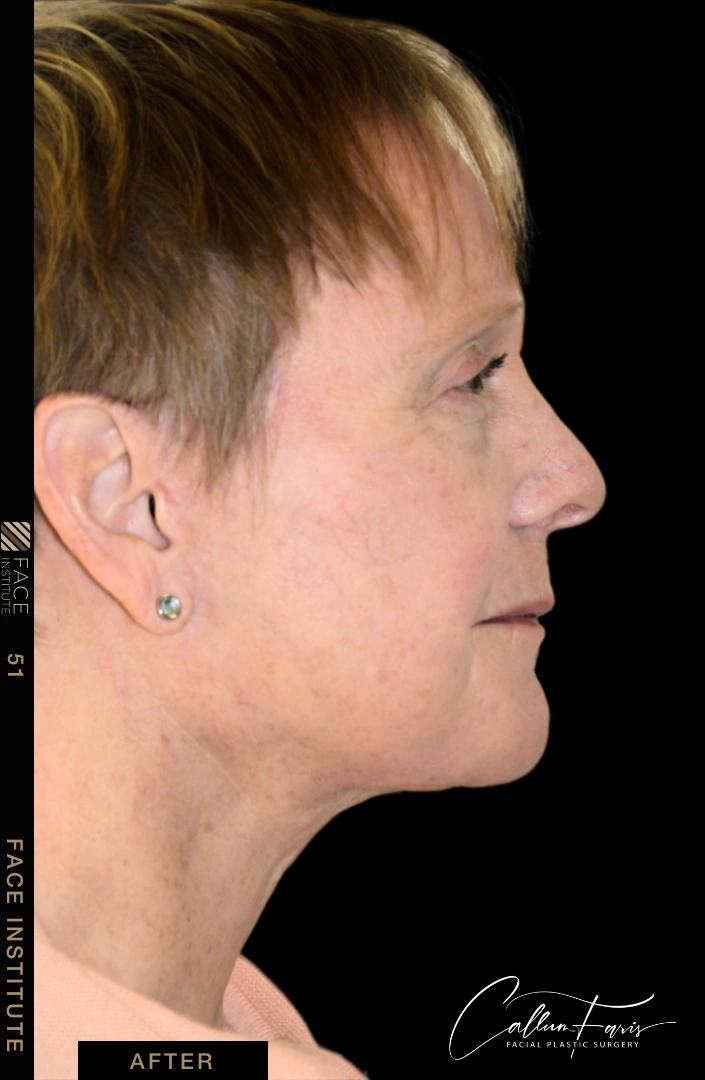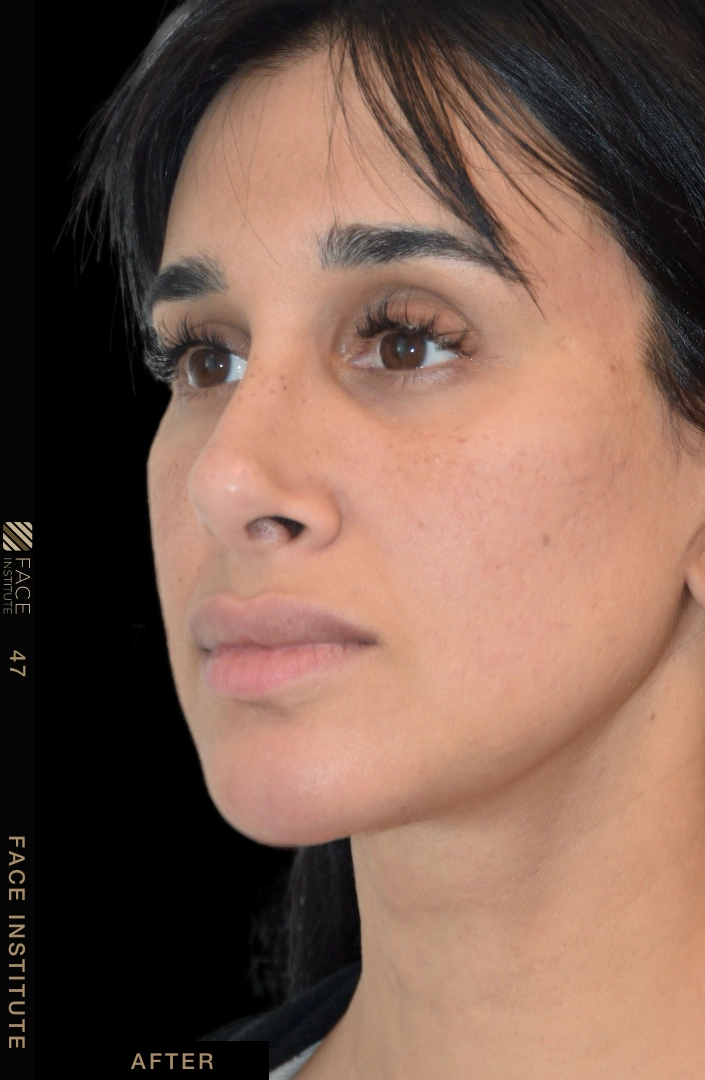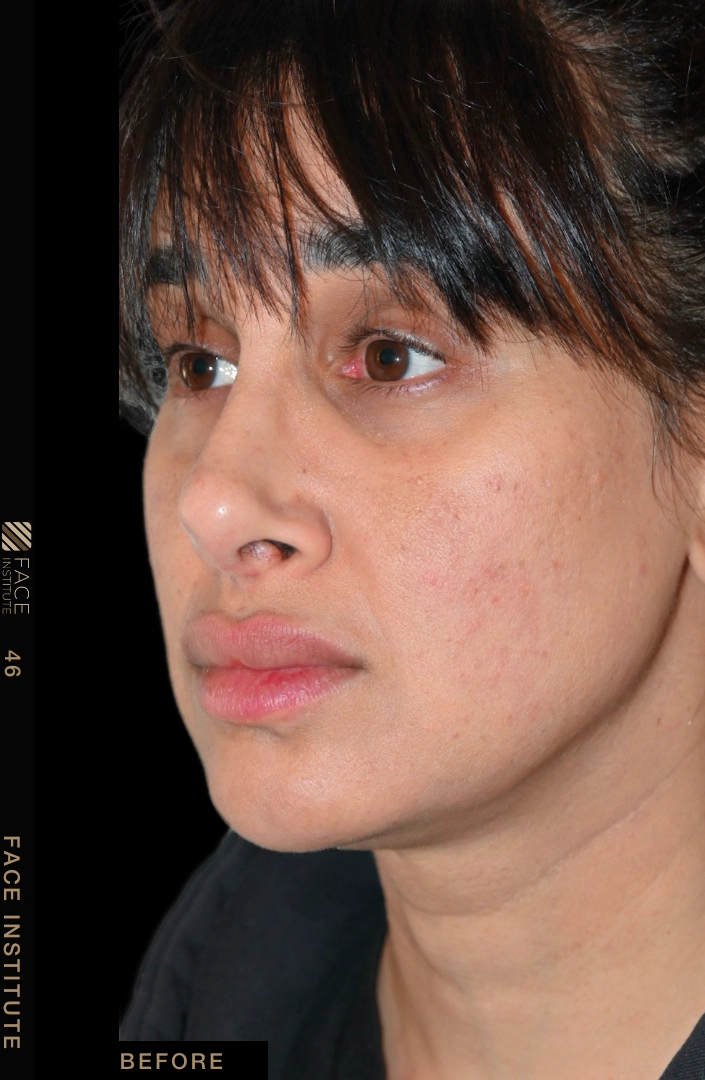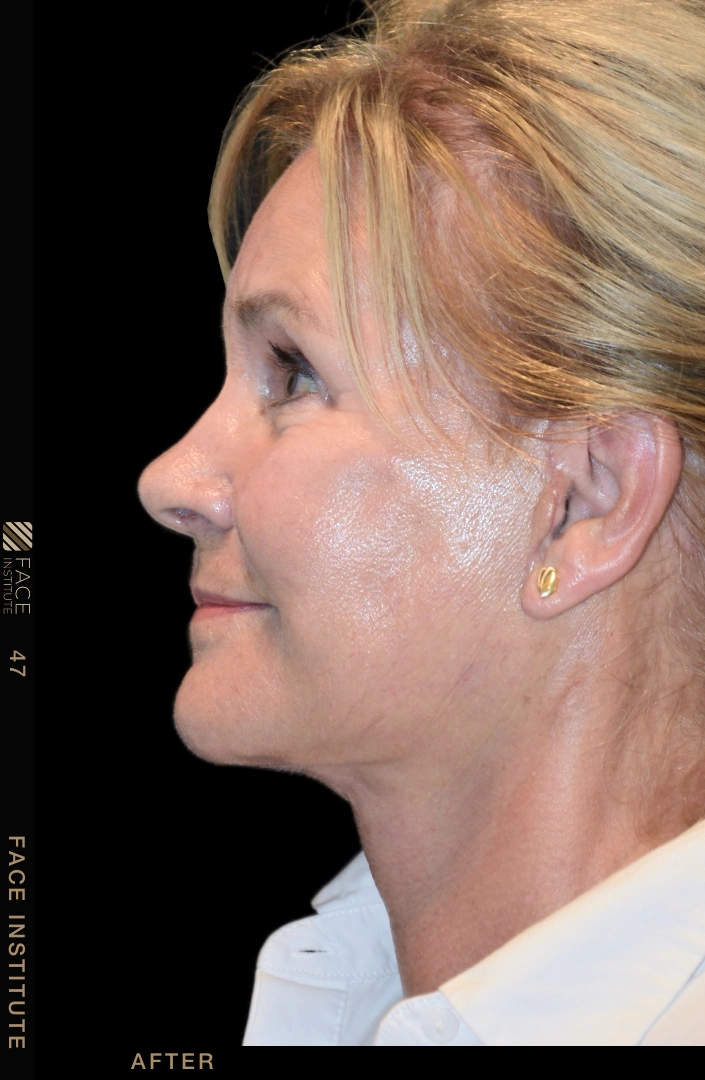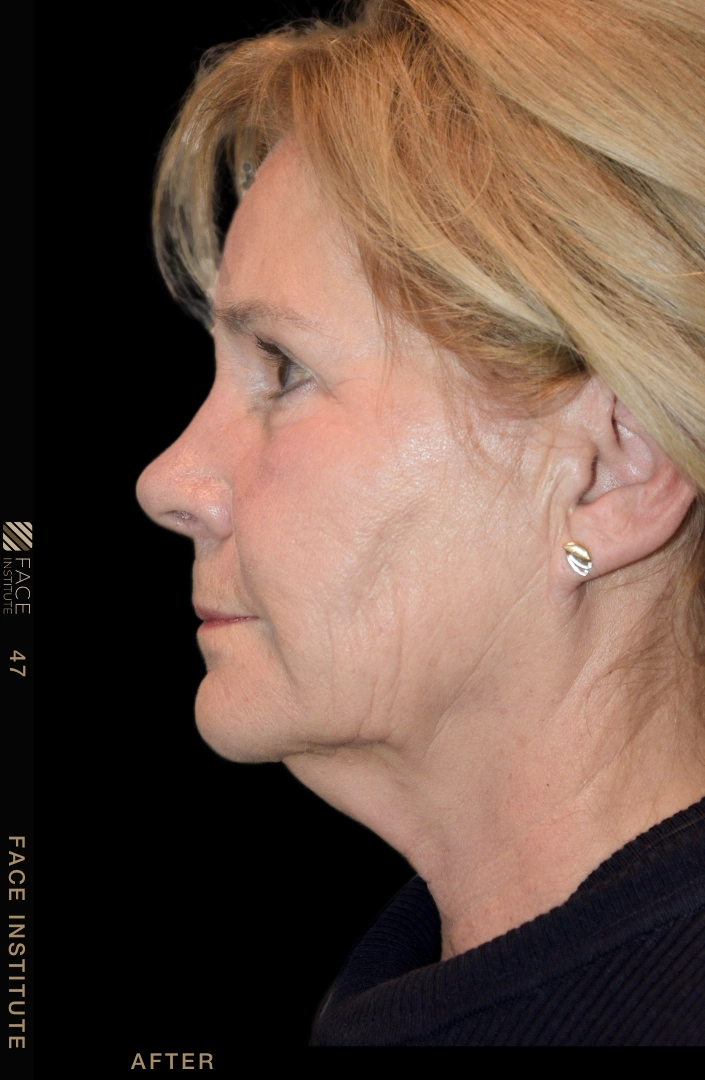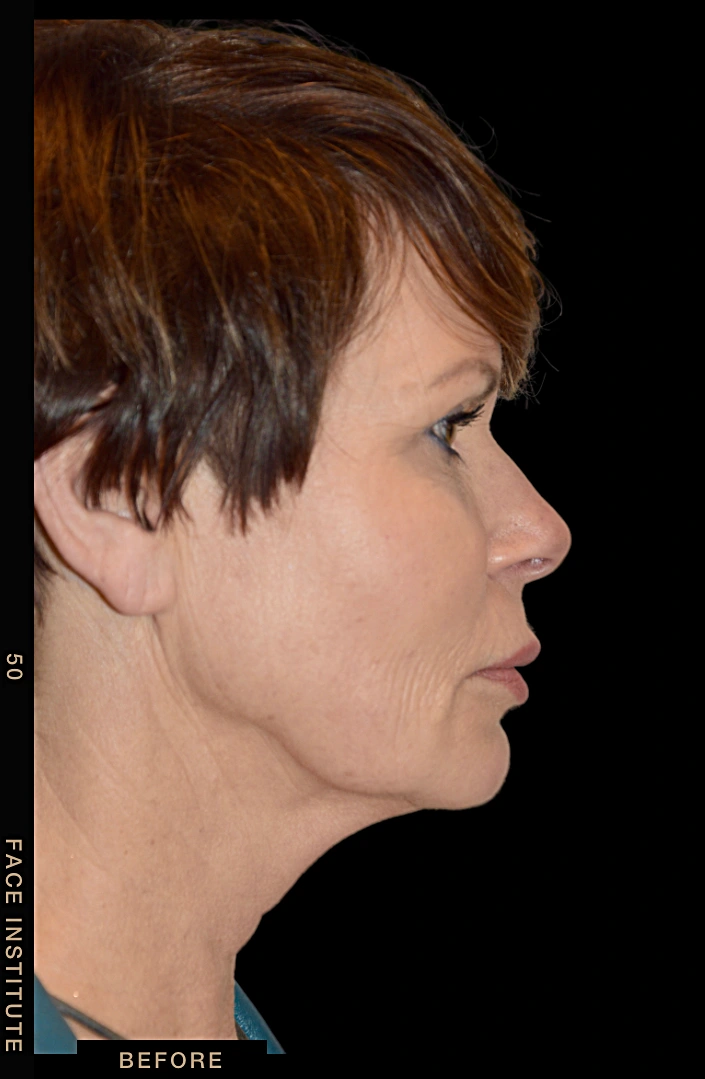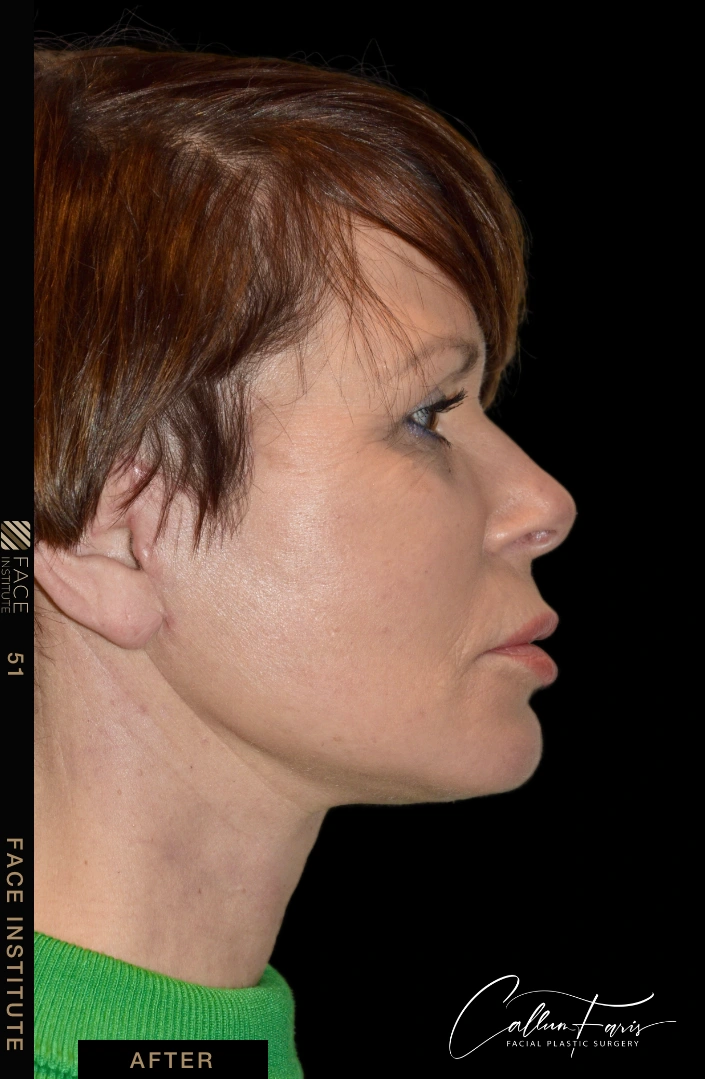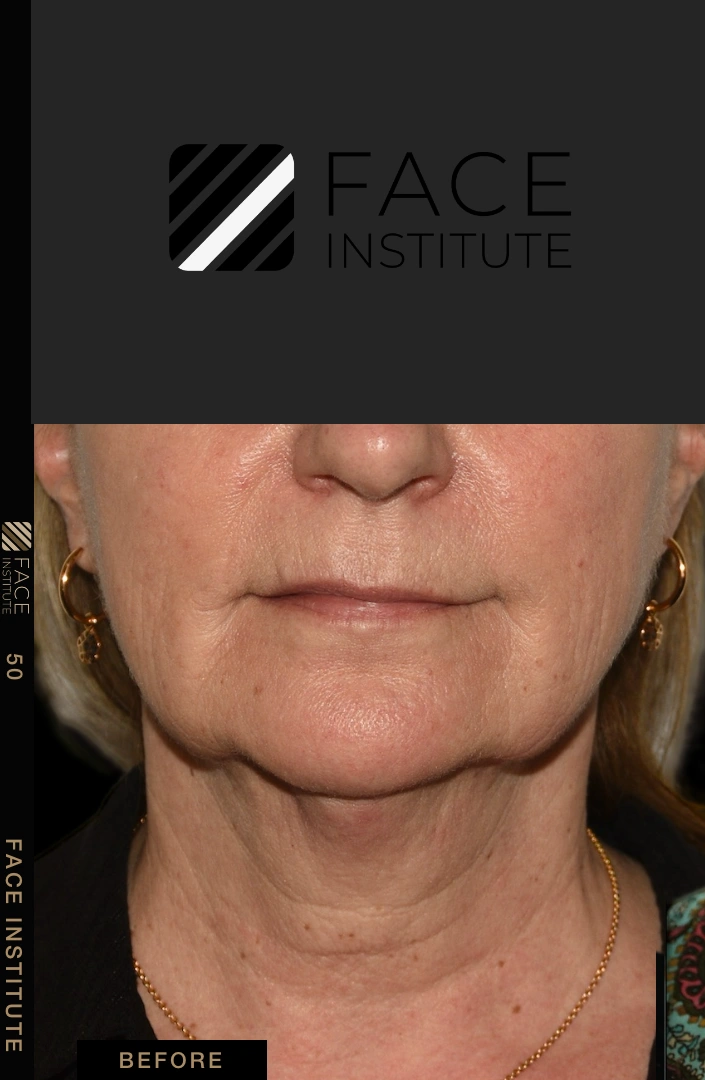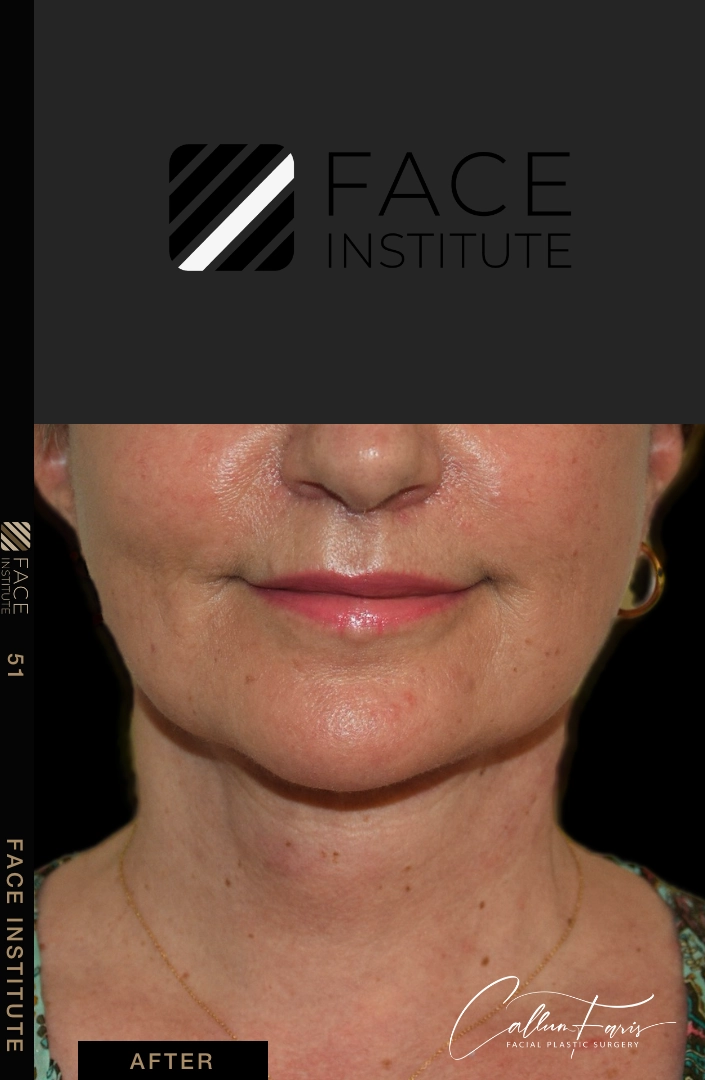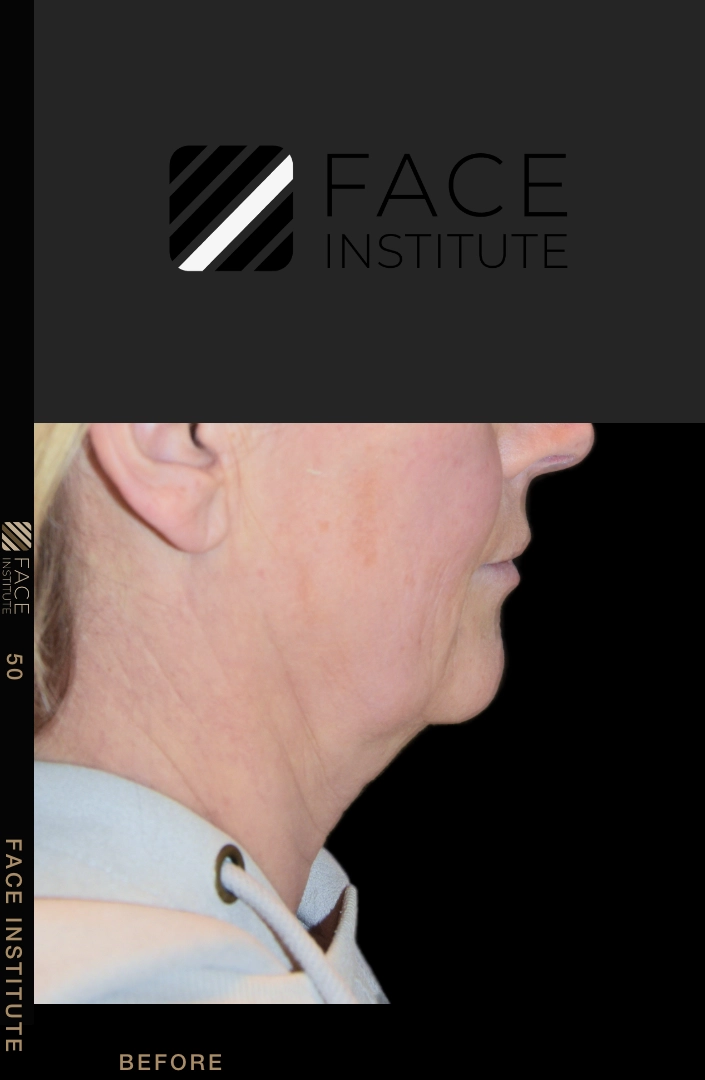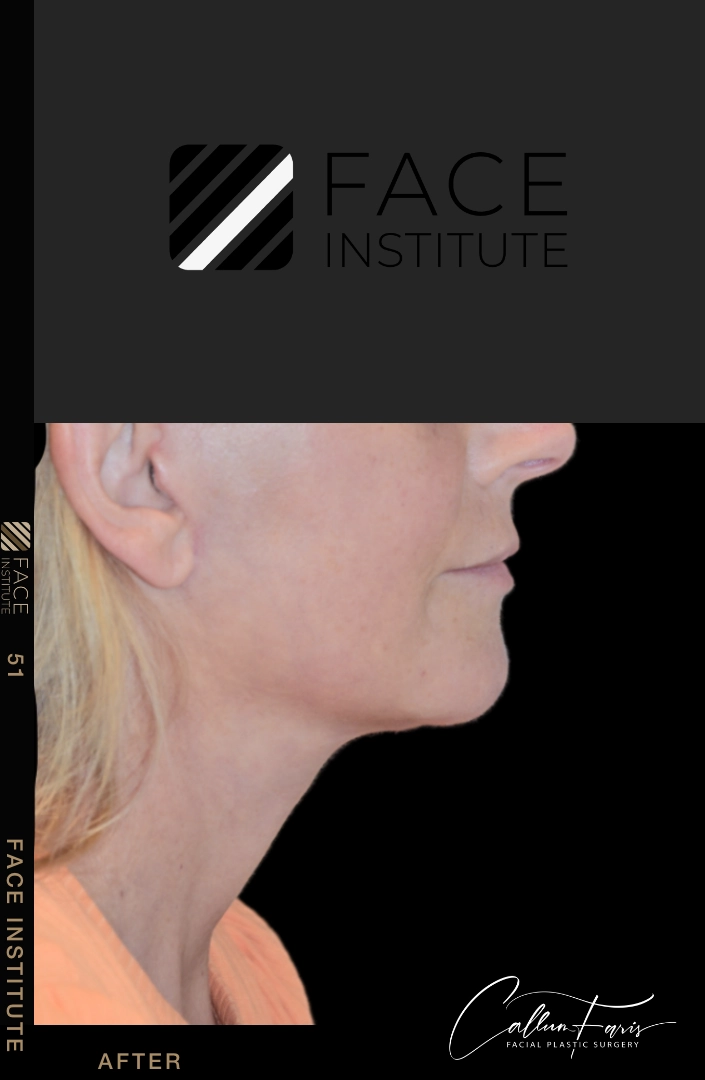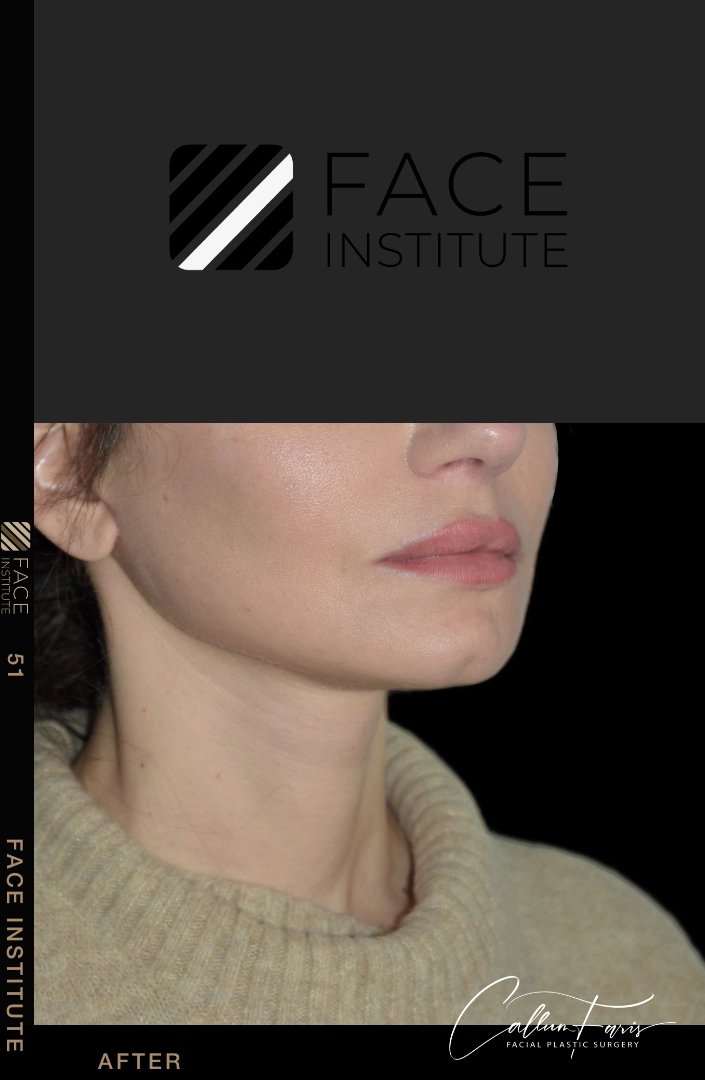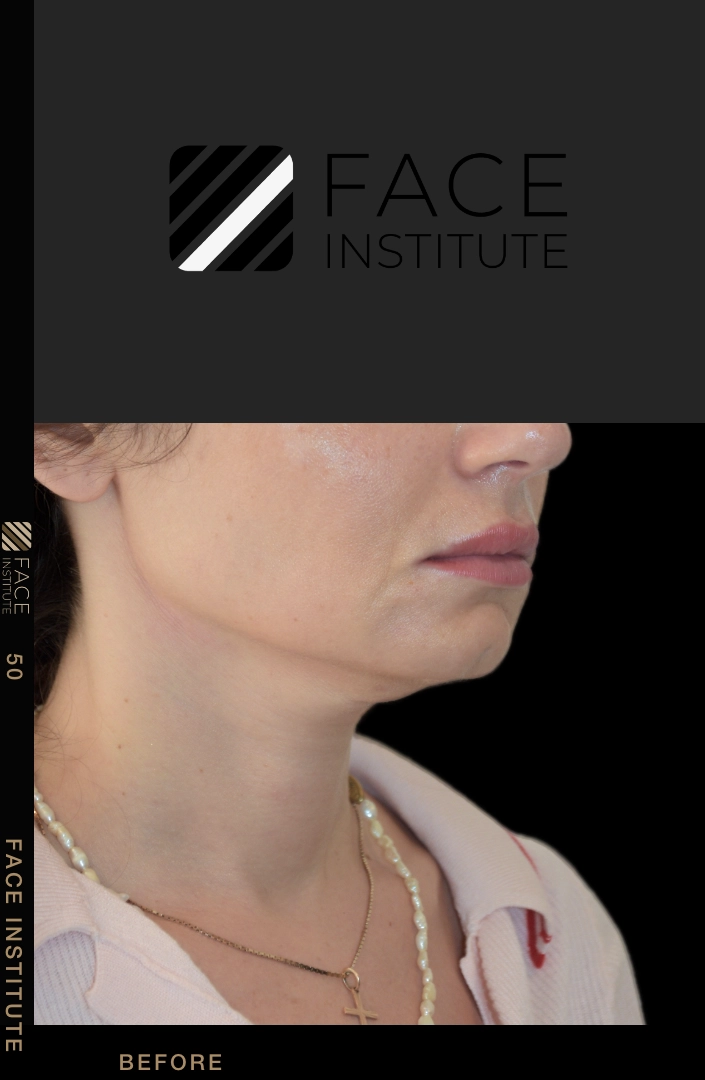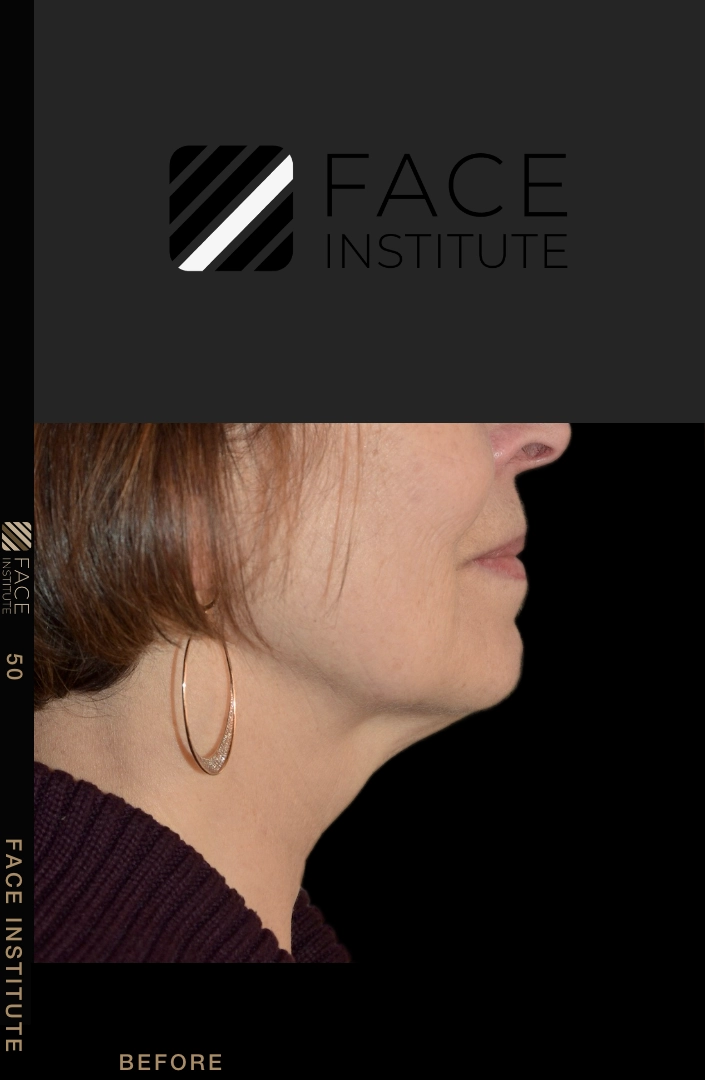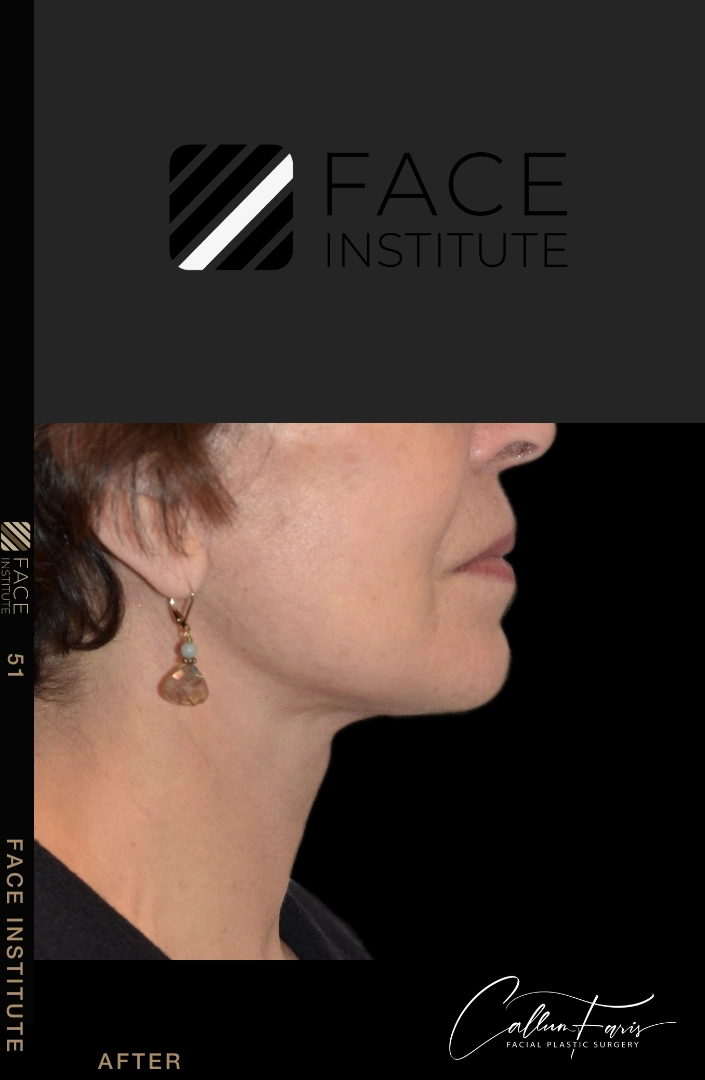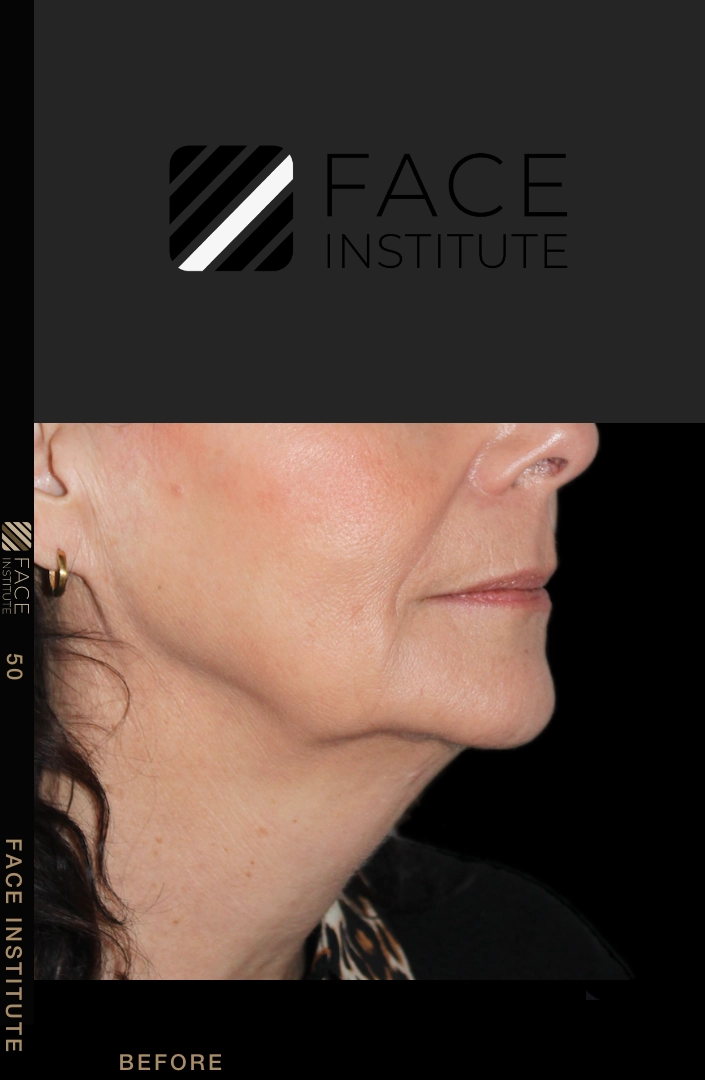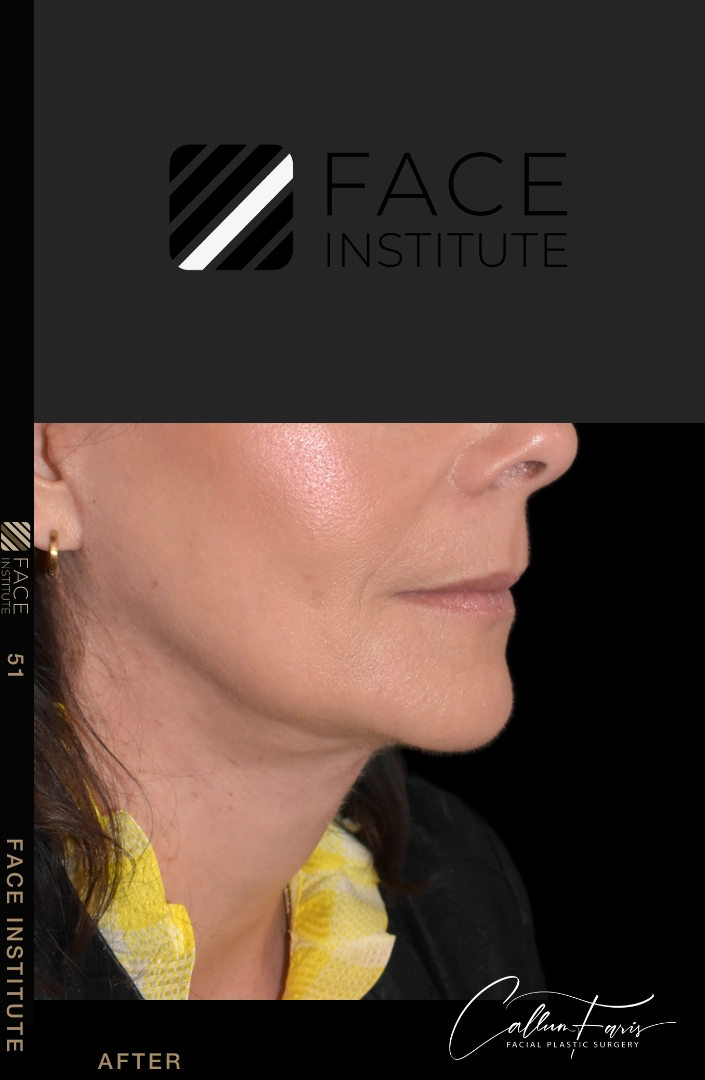The Extended Deep Plane Facelift
Get the facelift of the stars The 50,000 Dollar Extended Deep Plane Face Lift from America starting at 9,000 euro. This premium service is offered by Dr. Callum Faris, a distinguished facial surgeon educated at Harvard Medical School, specializing in Facial Plastic and Reconstructive Surgery.
Pre and Post-Facelift: Drs. Callum Faris's Artistry in Facial Rejuvenation. Example 1
Case studies
We have included the follow examples case to demonstrate the power of our approach. We use an extended deep plane facelift and deep neck lifting in combination when indicated with fat grafting, forehead lifting, lip surgery, chemical peels and eyelid surgery to achieve the best results. In the case studies 1-9 below the plans have been chosen by our clients after recommendations made by Dr Faris and Dr Schmidt.
An extended deep plane facelift and deep neck lift showcase a beautifully natural rejuvenation. One of our classic plans for a timeless transformation.
A comprehensive panfacial approach with an extended deep plane facelift, deep neck lift, endoscopic brow lift, fat grafting, and a lip lift. The result is a full-face harmonious, refreshed appearance that enhances youthful contours.
Another panfacial approach with an extended deep plane facelift, deep neck lift, endoscopic brow lift, and full face fat grafting, this transformation celebrates restored volume and lifted features.
Facial fillers were dissolved to reset the canvas, followed by pan facial fat grafting and an extended deep plane facelift and neck lift. The outcome is a sophisticated, sculpted, and naturally rejuvenated look.
Another beautiful example of our extended deep plane facelift and deep neck lift. A refined, refreshed result from one of our signature plans.
Our second most common plan: a tailored combination of an extended deep plane facelift, deep neck lift, and strategic fat grafting to restore youthful fullness and definition.
Natural results with the Deep Plane Facelift.
Our most basic plan: Combining an extended deep plane facelift, a traditional neck lift and lip lift.
Our most requested plan: an endoscopic brow lift (result not shown), extended deep plane facelift, deep neck lift, and fat grafting. The result exudes a lifted, refreshed, and effortlessly youthful look.
Our third most common plan: An extended deep plane facelift, neck lift, and fat grafting result in an elegant, rejuvenated appearance with refined contours and volume restoration.
Our second most common plan: Featuring an extended deep plane facelift, deep neck lift, and fat grafting. The outcome is a stunning balance of definition, volume, and graceful rejuvenation.
Read more: Deep plane facelift explained
Before we answer these questions, we will briefly explain the anatomy of the face and some important anatomical concepts, how a Deep Plane Facelift works, and why it is different from normal facelifts. Important anatomical structures and concepts:
- The face is arranged in layers – each layer has a defined role.
- The facial skin and facial muscles are attached to the bony skeleton through ligaments.
- A ligament is a very strong piece of tissue that attaches bone to other structures. It is designed to stop movement – like the chain and anchor of a boat.
- Between the facial retaining ligaments there are facial spaces. Spaces are loosely attached tissue. Spaces in the body are designed to allow movement of overlying structures. Spaces have nothing inside them – it is purely a gliding plane – thus allowing maximal movement of the overlying skin layers.
Frequently asked questions
- Who is a good candidate for the deep plane facelift? - Why is deep plane facelift more effective than other facelifts? - How are these results achieved with a deep plane facelift? - Is the deep plane facelift a more serious surgery compared to other facelifts? - Does it take longer to recover from a deep plane facelift? How long will I have to stay off work? - I need a revision facelift. Will the deep plane facelift work for me? - Why does the deep plane facelift cost more than other facelifts?
The face is arranged in layers, there are 5 see image:
The 1st layer is the skin and fat provide a tough waterproof cover layer for the deeper structures’ deklaag voor de onderliggende structuren. 2nd layer is the fat layer which is the insulating layer and the layer with the blood vessels to supply the skin with blood. 3rd layer is the SMAS layer, which provides the muscular layer for facial movement allow use to smile and frown and raise our eyebrows 4th layer is the ligament and facial spaces layer. The spaces allow the muscular layer to move over the bone and it has ligaments which attach the SMAS/skin/fat layer to the skeleton. 5th layer is the very tough strong layer covering and supplying the bone with a blood supply. It is totally fixed and cannot be stretched.
More abouth the 4th layer
The facial ligaments are like a tree. They secure the skin/fat/muscle (layer 1-2-3) to the bony skeleton. They do allow a degree of movement of back and forth of the skin, a bit like a tree bending in the wind. However, ligaments do significant amounts of movement of the overlying skin.
In layer 4 the facial spaces lie between the facial ligaments. The spaces have a defined purpose- to act as a gliding plane. They allow the more superficial layers, layers 1-2-3 above to move over the deeper layer (periosteum) layer 5 which is totally fixed to bone. This movement is key for producing facial expression. If it was not for the gliding plane of the spaces in layer 4, we would not be able to produce a wide smile and would have limited facial expression.
The mobility of the skin over the space also has a draw back. The skin is inherently weaker over the spaces than over the ligaments. As we age the skin over the ligaments tends to remain tight to the face, but the skin over the spaces can become loose and saggy. This creates bulges (as above).
Which layer is the facelift performed on?
The face lift can be performed in three layers. Over 95% of facelifts are S lifts, MACS lift, SMAS plication, SMAS flaps all mainly use the dissection in level 2. This means the SMAS layer level 3 is still attached to the bony skeleton by ligaments. This has two very important consequences: 1. The SMAS and skin can only be tightened (or the lift) a moderate amount as the ligaments are still intact. The ligaments stop the movement or lift of the SMAS and the skin tissues. The dissection is in layer two, the fat layer. The fat layer has the most blood vessels. This results in many blood vessels being divided leading to bleeding during the operation and bruising after the operation.
In layer 4 the facial spaces lie between the facial ligaments. The spaces have a defined purpose- to act as a gliding plane. They allow the more superficial layers, layers 1-2-3 above to move over the deeper layer (periosteum) layer 5 which is totally fixed to bone. This movement is key for producing facial expression. If it was not for the gliding plane of the spaces in layer 4, we would not be able to produce a wide smile and would have limited facial expression.
Extended Deep Plane Face Lift is performed in layer 4. All the facial ligaments are divided in this technique. This has significant benefits. 1.As the ligaments are now divided (the anchors of the face have been removed) the SMAS can be tightened/lifted significantly more and with less tension. One anatomical study showed that a Deep Plane Face lift resulted in twice the skin excision and twice the neck and midface improvement as SMAS plication (such a SMAS plication – MACS lift type surgery] 2. The dissection is in the facial space layer 4 that has far fewer blood vessels and this results in less blood vessels being divided, leading to less bleeding and bruising after the operation.
Let’s look at those questions again
Who is a good candidate for the deep plane facelift? Individuals looking for improvements in their jawline or nasolabial fold or neckline. Almost anyone who is medically fit for elective surgery can have a deep plane face lift. Most patients are between the ages of 40-75 years of age. Why do you say the deep plane facelift is more effective than other facelifts? The deep plane facelift allows a surgeon to address the effects of aging more comprehensively by lifting the whole skin and SMAS as one unit after division of the facial ligaments in layer 4, leading to a much more natural look, very different from the old-style operated look. The facial improvements produced are longer lasting than alternative facelifts that do not divide the facial ligaments. This technique uses the natural deep spaces of the face, and therefore there is reduced tissue damage, so patients, in our experience, have less bruising, swelling and bleeding. As the facial tissues are lifted, and by repositioning deeper tissue layers, there is no pulled skin and no tell-tale trace of a facelift having occurred. After a deep plane facelift the patients simply look a much younger version of themselves, well rested and rejuvenated and the results stand the test of time. This is the ideal we strive for and is much appreciated by our patients. In our view, all of these factors make the extended deep plane facelift far more effective than any other type of facelift available at present. How are these results achieved with a deep plane facelift? The surgeon works in the deepest planes of the face where there are natural spaces and releases the retaining ligaments of the face (layer 4). Once released the entire facial skin of the cheeks, jaw line and neck can be repositioned with minimal trauma to the skin surface. This is not achieved with the skin only facelift or a standard SMAS or MACS facelift. Is the deep plane facelift a more serious surgery compared to other facelifts? Yes and no. Yes, because this surgery is technically more demanding to perform than the other types of facelifts and requires superior skill and expertise in handling the deeper tissue layers. For this reason, only a select few surgeons in Europe and around the world are performing deep plane facelifts. No, in fact from a patient's point of view recovery times after deep plane facelifts are relatively short compared to alternative facelifts. The surgical work is done on deeper tissue layers of the face where there are natural spaces, rather than near the surface. As the skin is minimally disrupted, consequently bruising is much less. The avoidance of tension means scars will heal better, without lumpy red or stretched scars. Is it riskier or have more complications? The deep plane procedure is not any riskier than other facelift techniques. In fact, it leads to fewer complications, as we have explained above. Does it hurt more than a regular facelift? No. There is less skin trauma in a deep plane facelift. It is our experience that this technique hurts less than many other types of facelifts. As the surgery is performed on Layer 4, there is less trauma produced. Other facelift techniques are dissected in layer 2 which has a high concentration of nerve endings and blood vessels. Patients undergoing the deep plane facelift usually have a recovery that just requires paracetamol and occasional Tramadol or codeine tablets over the first 3-4 days. Does it take longer to recover from a deep plane facelift? How much time will I have to stay off work? Our experience is that it requires similar downtime than other facelifts, however in our experience with less bruising, swelling and pain. Most people can get back to work or social activities in two weeks. Usually, by three weeks people will not notice you've had a facelift, but comment on how well rested and rejuvenated you look. Many people find this helpful and fully appreciate this aspect of deep plane facelift. Most do not like to announce their beauty decisions to the world. They like the natural looking results and the confidentiality this brings. I need a revision facelift. Will the deep plane facelift work for me? Yes, absolutely. The deep plane technique is ideal for revision surgeries. As the majority of facelifts have been performed in the superficial plane (layer 2), this leaves the deep plane (layer 4) unoperated on. Therefore, a deep facelift for a second facelift is actually the preferred technique. Why does the deep plane facelift cost more than other facelifts? As mentioned before, the deep plane technique requires specialized expertise and experience. The operation is performed under general anaesthesia and longer operating time. For more information: Please contact us
Read more here: privacy policy

